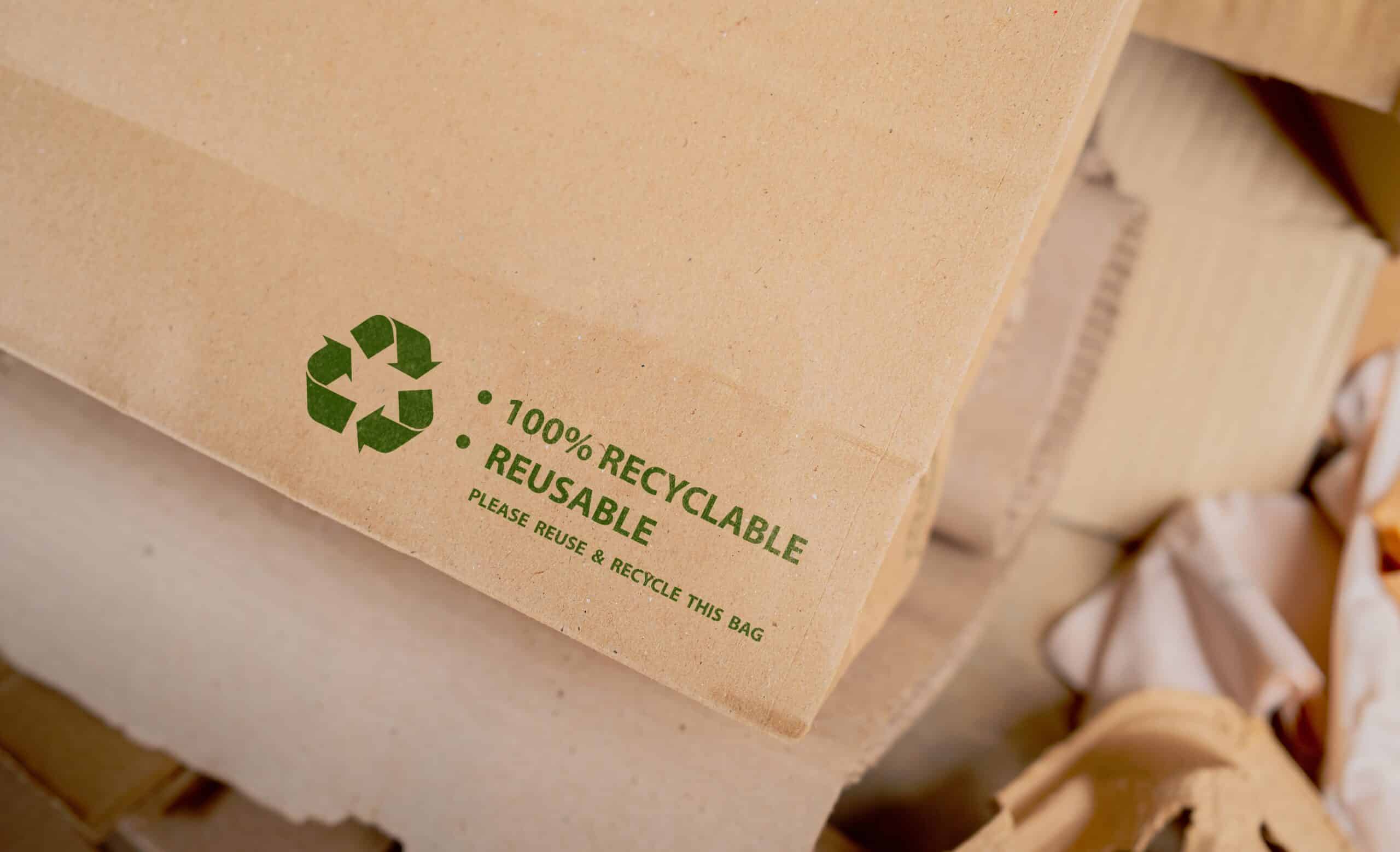In a supply chain where climate change, pollution concerns, and resource depletion are top of mind for businesses and consumers, inventory-based organizations are making significant changes to align with environmental goals. Customers, investors, and regulators are increasingly demanding greater transparency and accountability regarding ecological impact, and businesses are setting sustainability goals to ensure compliance. Among the most visible areas of concern when it comes to sustainability in the supply chain are packaging and material sourcing, both of which play a significant role in an inventory-based company’s environmental footprint.
Eco-friendly packaging and responsible sourcing have transitioned from buzzwords and peripheral concerns to become core components of forward-thinking businesses. By reimagining how products are packaged and where materials are sourced, companies can significantly reduce their waste, lower emissions, and achieve their environmental commitments.
This article examines the meaning of eco-friendly packaging, the impact of ethical sourcing practices on supply chains, and the steps businesses can take to lead the way towards a more sustainable future.
The Environmental Impact of Traditional Packaging and Material Sourcing
Traditional packaging, which is often made from plastic, styrofoam, and non-recyclable composite materials, has a profound and lasting impact on the environment. While these materials are convenient, lightweight, and inexpensive, their true cost becomes more apparent when we consider the long-term damage they inflict on ecosystems, human health, and the climate.
How severe is the impact of traditional packaging on the environment? Research shows that packaging is the source of 40% of the planet’s plastic waste, more than 90% of packaging waste is sent to landfills or ends up in the environment, and that 8.3 million tons of mismanaged plastic waste enter oceans every year.
The environmental toll doesn’t stop at disposal. The production of conventional packaging materials is energy-intensive, relying heavily on fossil fuels and contributing significantly to greenhouse gas emissions. Studies show that the production, use, and disposal of plastic packaging yield approximately 1.8 billion metric tonnes of carbon emissions annually, equivalent to about 1.8 gigatons of carbon emissions. Additionally, traditional packaging contributes to the depletion of resources. The extraction of raw materials (such as petroleum for plastic or virgin wood pulp for paper) places a heavy burden on forests, water supplies, and ecosystems.
Further data show that consumers are concerned about the impacts of packaging, and half would be willing to pay more money for sustainable packaging. Additionally, many companies have launched efforts to promote sustainability with high recyclability and recycled content.
Cumulatively, the effect of these issues makes it clear: traditional packaging systems are misaligned with environmental sustainability, and eco-friendly packaging is both an ecological necessity and an opportunity for businesses to lead positive change.
What is Eco-Friendly Packaging and Material Sourcing?
Eco-friendly packaging and material sourcing are two distinct (but related) concepts. Eco-friendly packaging refers to materials and design practices that minimize the environmental impact of packaging materials. It typically meets one of more of the following criteria: it’s recyclable, compostable, biodegradable, reusable, or minimalist. Some popular eco-friendly packaging materials include recycled paper and cardboard, mushroom packaging made from mycelium and agricultural waste, plant-based films for food wrapping, and recycled fabrics.
While eco-friendly packaging often gets the spotlight, the materials used to create those packages are just as important. Eco-friendly material sourcing involves selecting raw materials that are harvested, produced, and transported in ways that minimize environmental and social harm.
Eco-friendly material sourcing means prioritizing:
- Renewable or recycled resources over finite or virgin materials.
- Ethical labor practices and fair trade standards.
- Local or low-impact sourcing to reduce transportation emissions.
- Transparency and traceability in the supply chain
By aligning packing and sourcing strategies with broader environmental goals, businesses can contribute to a more sustainable supply chain.
Actionable Steps for Businesses to Take
Transitioning to eco-friendly packaging and sustainable material sourcing doesn’t have to be overwhelming. Whether you’re a startup or an established enterprise, here’s how you can make meaningful progress with practical, focused steps:
1. Conduct a packaging and materials audit
Start by analyzing the current state of your packing and materials. Determine which materials are being used, if they’re eco-friendly, where they’re sourced from, and what their carbon footprint is. This audit helps identify opportunities for improvement and sets a clear baseline for tracking progress.
2. Set measurable sustainability goals
Define clear, achievable targets aligned with your business’s broader environmental goals. Set deadlines and assign ownership internally to ensure accountability and responsibility. For example:
- Reduce waste from packaging by 20% in two years.
- Ensure 75% of packaging is recyclable or compostable by 2030.
- Source 50% of raw materials from certified sustainable suppliers within 12 months.
3. Partner with sustainable suppliers
Choose vendors and manufacturers that align with your sustainability goals and standards. Look for certified materials, transparent sourcing practices, and even suppliers who are open to collaboration and innovation in eco-design.
4. Leverage advanced inventory management software
Sustainability hinges on efficiency and transparency, which is where smart supply chain technology, such as inventory management software, comes into play. These systems can play a crucial role in reducing waste, optimizing sourcing, and supporting eco-friendly operations. By using advanced inventory management solutions, inventory-based businesses can:
- Utilize demand forecasts to minimize overproduction and overordering, thereby reducing excess packaging waste and unnecessary emissions.
- Track supplier trends to identify inefficiencies or opportunities for sustainable choices, such as optimized delivery routes or electric vehicles.
- Automate reordering and safety stock levels based on real-time demand, lowering the risk of expired or obsolete inventory.
5. Educate consumers and stakeholders
Sustainability efforts are more effective when your customers understand and support them. On that note, take steps to educate stakeholders. Include clear disposal instructions, educational messaging on packaging or product pages, and transparency reports. By empowering consumers with knowledge, you also build trust and brand loyalty.
6. Track progress and report results
Use data to monitor your environmental impact over time. Measure emissions reductions, waste diversion rates, and sourcing improvements. Additionally, regularly publish sustainability reports and utilize third-party verification where possible to enhance credibility. This transparency helps build trust while ensuring you’re achieving desired results.
Taking action on sustainable packaging and material sourcing doesn’t require perfection on Day One. It requires commitment, strategy, and continuous improvement.
Achieve Your Sustainability Goals with StockIQ
Sustainability isn’t just a trend – it’s a business imperative that’s critical for revenue, compliance, and meeting customer expectations. By adopting eco-friendly packaging and sourcing materials responsibly, businesses can reduce their environmental footprint, enhance brand value, meet regulatory requirements, and future-proof their operations. If you’re looking to enhance the way your business handles sustainability, StockIQ is here to help.
StockIQ is a supply chain planning suite built for businesses like yours that taps into advanced technologies to help you create a more efficient, sustainable supply chain. Our user-friendly system enables you to control inventory, simplify ordering, and enhance forecasting with AI-powered tools and sophisticated machine learning algorithms.
Are you interested in learning how StockIQ can enhance your approach to sustainability? Contact us today or request a StockIQ demo.

